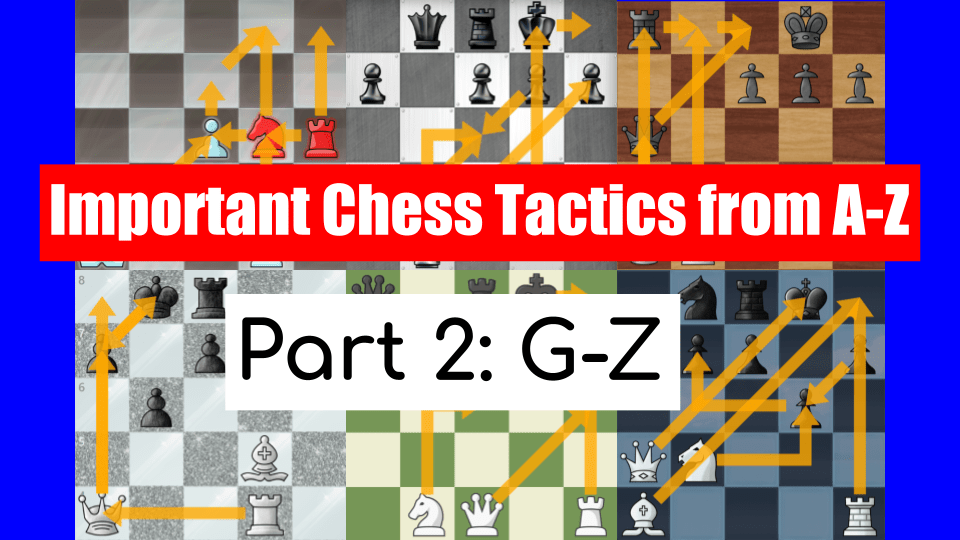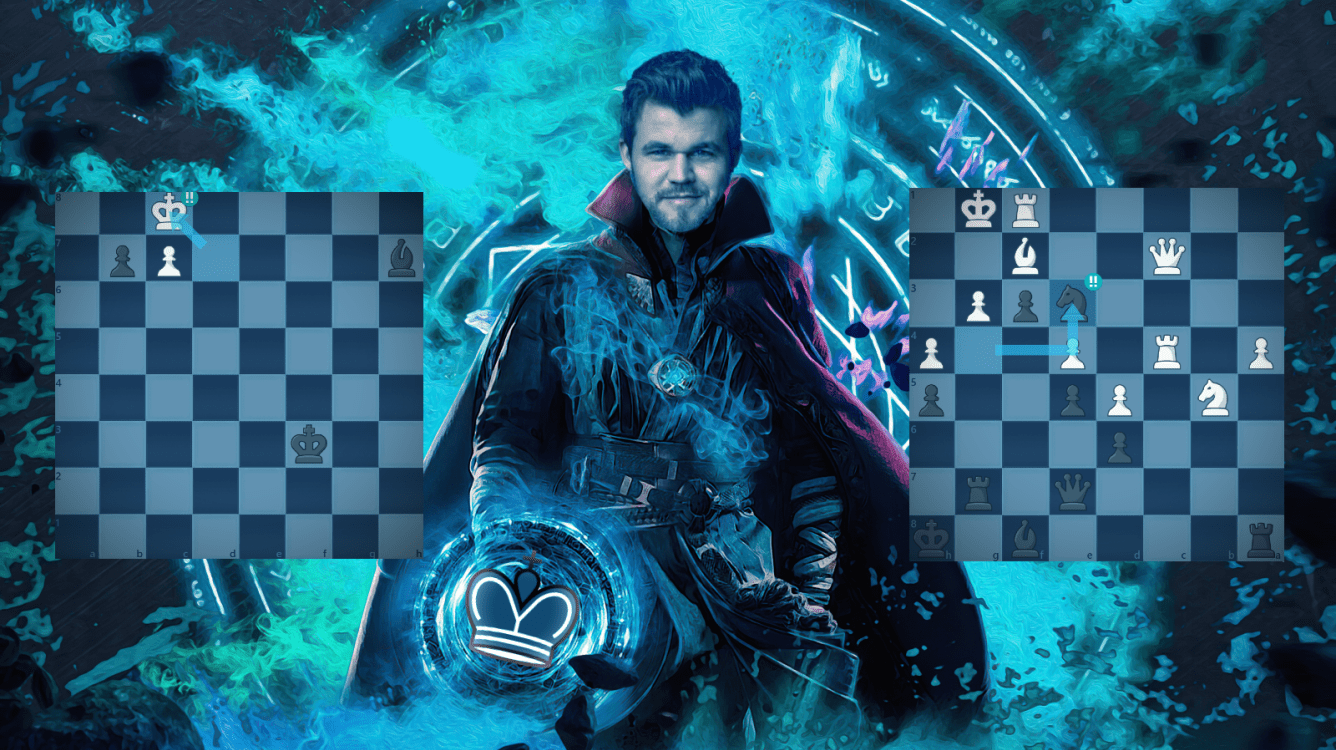
Important Chess Tactics from A-Z - Part 2: G-Z
Today I'll be showing some more important tactics. In this blog, I've decided to go from "G" all the way through "Z". Make sure you see the first blog here.
G - Gain of Tempo
Tempo is often misunderstood by many beginners, though it can be very important and sometimes even determine the game's end.
H - Hanging Piece
"Hanging" is another way of saying "undefended" or "loose" in chess. A tactic that involves simply taking or exposing undefended pieces in some way would qualify. Under this theme, one might also consider a forcing combination that climaxes with a double attack, with one or more of the targets being undefended.
I - Interference
To move a piece between two other attacking pieces when at least one of those attacking pieces is an opponent's piece. Sometimes a piece will interfere with two attacking pieces, thus creating confusion and often overloading (see "overloading") those pieces.
L - Lifeline
There are no tactics for "J" or "K" (if there are, let me know in the comments) so we're skipping to "L." This is a tactic you'll do, but not know the name of.
M - Mate in 1
Checkmate - the goal of the game. So wouldn't that make Mate in 1 tactics very useful know! (Except most of us can already spot mate in 1 anyway ¯\_(ツ)_/¯ )
O - Overloading
There's no tactic for "N", so "O" is next. A piece that has too many things to do is "overloaded." For example, a bishop that has to both stop a passed pawn from queening and guard against a checkmate is overloaded. By carrying out one threat (for example, queening the pawn) the opponent could force the overworked bishop to leave its post, allowing the checkmate threat to succeed.
P - Pin
There's many tactics for "P", but I decided to choose pin for how common it is. When a piece cannot move because it is blocking/guarding a more valuable piece behind it from being captured, that piece is "pinned". A pinning piece is a long-range piece (a rook, queen, or bishop) that is aimed at one of the opponent's valuable pieces, with a less valuable opponent's piece in the way or blocking the rook, queen or bishop from attacking the more valuable piece. An absolute pin is when a piece is pinned to the king, thus making it absolutely illegal to move the pinned piece.
Q - Queen Sacrifices
The prettiest tactic most of the time, a sacrifice of the queen with the distinct purpose of achieving something more valuable. Most often, a queen sacrifice is just one part (a single move among others) of an attempt to checkmate the enemy king or eventually win back material at the end of the combination.
R - Removal of the Defender
A tactic that involves eliminating the critical defensive piece that otherwise stands in the way of achieving a much greater goal (most often checkmate or the winning of large amounts of material). A player looks to remove the defender as a destructive means to achieve their goal.
S - Stalemate
And I thought there were a lot of things for "P"! Anyway, when a player whose turn it is has no legal moves by any of his/her pieces but is not in check. A stalemate is a draw. A stalemate tactic would occur when the objective/goal of the puzzle was to force a stalemate from an otherwise lost or unfavorable position.
T - Trapped Piece
A piece that finds itself with either no moves at all or at least no moves that avoid the loss of material. Often, a piece might be trapped at the end of a forced sequence of moves.
U - Underpromotion
Promoting (see "promotion") a pawn to a piece less than a queen (in other words, promoting a pawn to a knight, rook, or bishop). Since the queen is the strongest piece, players almost always choose to promote their pawns to queens. An underpromotion tactic occurs when there are special reasons that a player needs a weaker piece rather than a queen (almost always a knight, since it is the only piece whose move is not already reflected by the queen's abilities) - whether to stop an opponent's threat or achieve something even better than what a queen could offer.
V - Vulnerable King
A position/puzzle where tactics arise from the exposed position of the enemy king. A "vulnerable" king's position may often lead to that king being put in a "mating net" of some kind.
W - Windmill
A rare tactic in which a repeated discovered check (see "discovered attack/check") allows one piece to go on a rampage, capturing multiple enemy pieces.
X - X-ray Attack
An x-ray tactic in chess occurs when one of your long-range pieces (a rook, bishop, or queen) attacks "through" one of your opponent's pieces to indirectly attack/threaten or defend beyond it. An x-ray tactic often occurs along with the theme of back rank mate.
Z - Zwischenzug
Nothing for "Y", so next is zwischenzug, probably the hardest tactic to spell. Zwischenzug is a German word meaning "in-between move". An often unexpected move inserted in between an otherwise forcing sequence of moves. The zwischenzug generally changes the result of the sequence. A "desperado" is a powerful example of a zwischenzug tactic.

